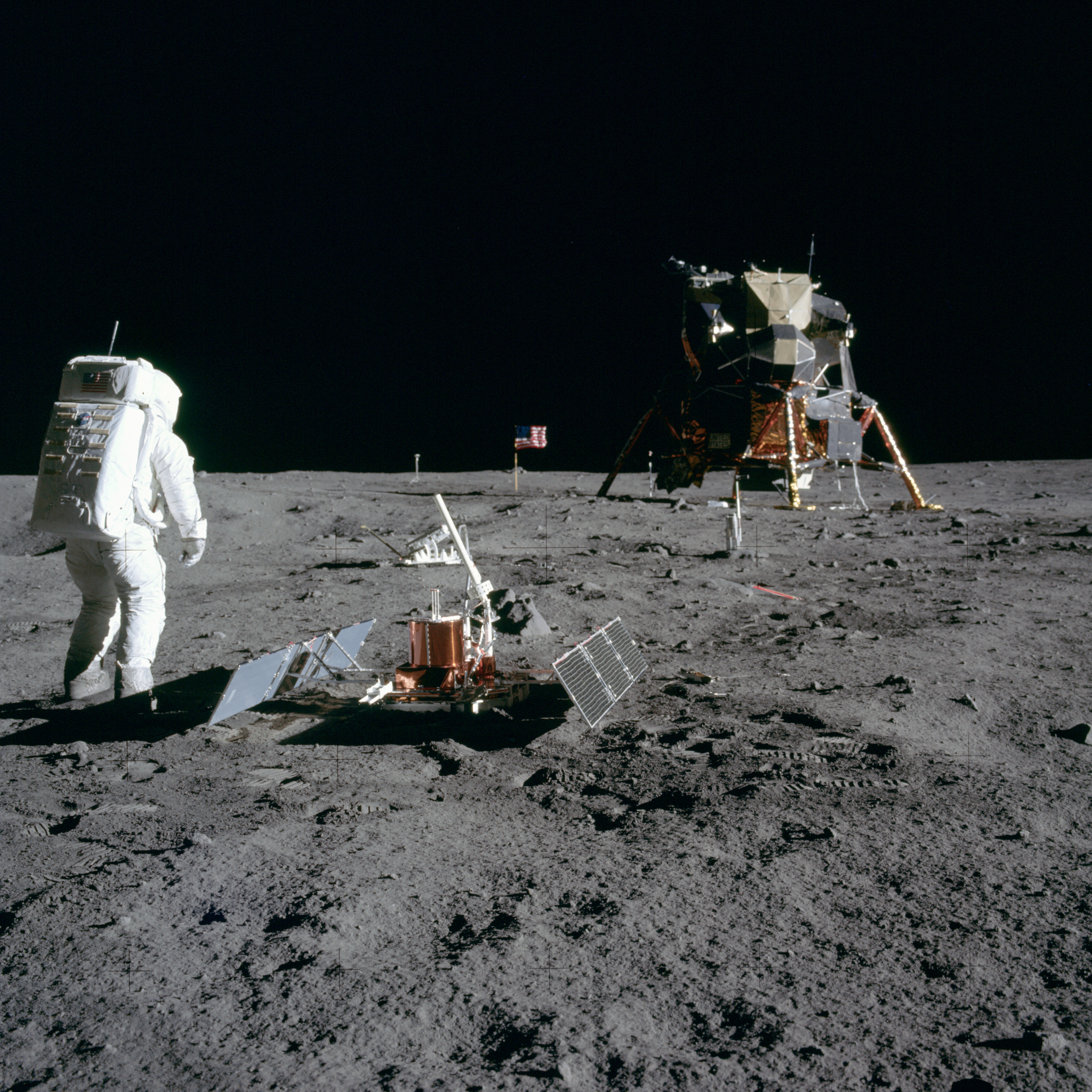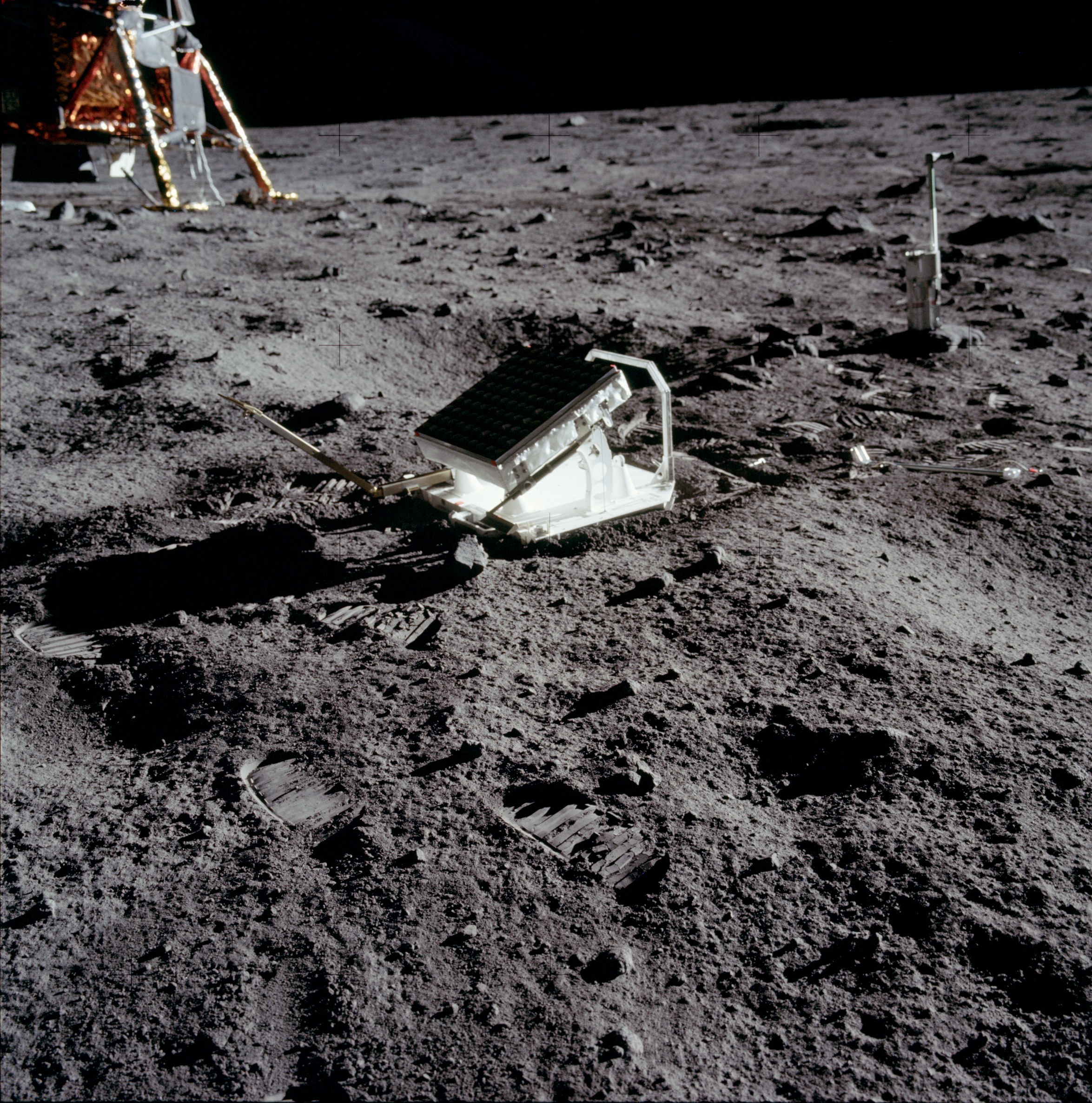My Apollo 11 Experience
Tomorrow marks the fiftieth anniversary of the moment when men first stepped on the Moon’s surface. The Apollo 11 Moon landing remains indelibly etched in my mind’s eye. Shortly after lunch on July 20, 1969, ten of my fellow University of Toronto astronomy grad students and two astronomy professors headed upstairs with me to the department lounge to watch the only television available. We watched and listened intently to communications between Houston and the Lunar Command Module, Columbia, especially during the delicate separation of the Lunar Module, Eagle, from Columbia.
Satisfied that the Eagle and her two passengers were safely (and slowly) on their way to the Moon’s surface, we went back to our offices and our pressing research projects. A couple of hours later, we returned in time to hear, unforgettably, “The Eagle has landed.” Knowing several more hours would pass before Neil Armstrong and Buzz Aldrin could exit the Eagle, all but two of us went back to our studies. I vividly remember the shout from upstairs, “You better come now!” Within minutes we saw Armstrong gingerly descend the ladder, declaring, “One small step for man, one giant leap for mankind.”
Figure 1: Buzz Aldrin Next to the Passive Seismic Experiment Instrument with Eagle in the Background. The laser reflector is slightly to the left of about halfway between the Passive Seismic Experiment Instrument and the Eagle Lunar Module. Image credit: NASA
Not only were we enthralled to see Armstrong and Aldrin bounce around on the lunar surface, picking up rocks, but we were also glad to see them set up a special laser reflector. Designed to yield progressively higher-precision tests of general relativity, this reflector has performed wonderfully, affirming general relativity to an unprecedented degree.1 What’s more, it has been used to constrain changes in Newton’s gravitational constant to less than two parts in ten trillion per year. The latter finding attests “the fixed laws of heaven and earth” (see Jeremiah 33:25). Heading home at 2:30 AM, I sensed that the night of July 20–21, 1969, would compare with few other events of my lifetime.
Figure 2: Apollo 11 Lunar Laser Ranging Reflector. Image credit: NASA
Featured Image: The Eagle Lunar Module Ascending from the Moon Toward Columbia, the Lunar Command Module. Image credit: NASA
Endnotes
- Hugh Ross, “General Relativity and Its Christian Implications Pass Yet More Tests,” Today’s New Reason to Believe (blog), Reasons to Believe, December 18, 2017, /todays-new-reason-to-believe/read/todays-new-reason-to-believe/2017/12/18/general-relativity-and-its-christian-implications-pass-yet-more-tests; James G. Williams, Slava G. Turyshev, and Dale H. Boggs, “Lunar Laser Ranging Tests of the Equivalence Principle,” Classical and Quantum Gravity 29, no. 18 (August 15, 2012); id.184004, doi:10.1088/0264-9381/29/18/184004.








